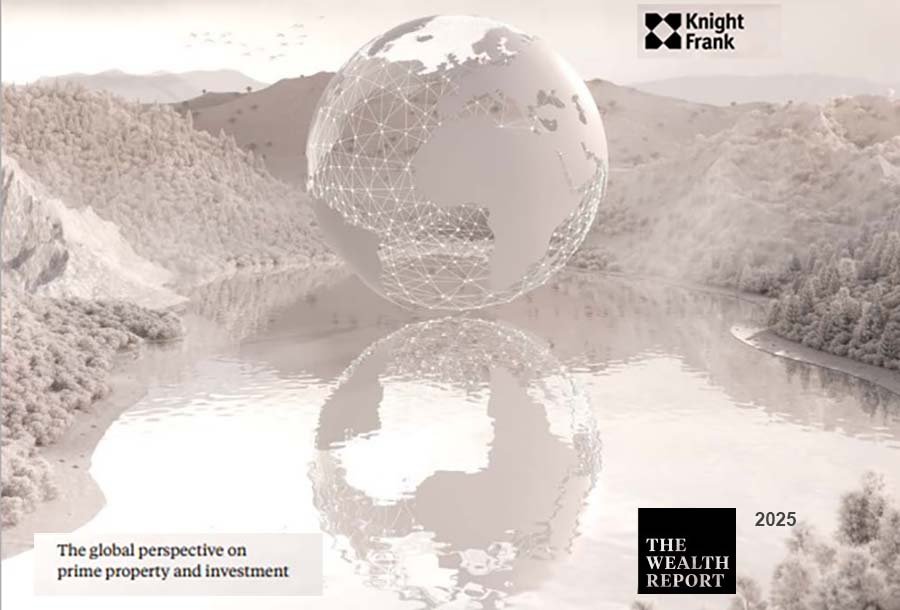читайте также
 Snow Cyclone “Francis” in Russia: Widespread Disruptions at Airports and on Roads
Snow Cyclone “Francis” in Russia: Widespread Disruptions at Airports and on Roads
 Canada tightens scrutiny at land crossings: Asylum claims show a clear decline
Canada tightens scrutiny at land crossings: Asylum claims show a clear decline
 Wealthy Americans eye New Zealand luxury homes: Ban lift reshapes the top end of the market
Wealthy Americans eye New Zealand luxury homes: Ban lift reshapes the top end of the market
 Europe Hit by Storm Goretti: Transport Disruptions and Power Outages
Europe Hit by Storm Goretti: Transport Disruptions and Power Outages
 Snow Disruptions at Brussels Airport
Snow Disruptions at Brussels Airport
 EU Pressures Bosnia Over Visa Policy Divergence
EU Pressures Bosnia Over Visa Policy Divergence
Key Threats to the Global Economy in 2025: Knight Frank

The global economy in 2025 is developing under heightened risks, notes Knight Frank in the Wealth Report 2025. Among the key threats are inflation, debt pressure, trade conflicts, and an overheated technology market. The situation is further complicated by geopolitical instability and so-called “great unknowns” — ranging from pandemics to climate disasters. At the same time, the baseline scenario projects global GDP growth of around 3%.
Trade Wars and Protectionism
One of the main sources of uncertainty is the return of tariff conflicts. According to an Oxford Economics survey, nearly two-thirds of business leaders believe trade wars will significantly affect the global economy. The U.S. has already imposed tariffs on goods from Canada, Mexico, and China, raising fears of disrupted supply chains and increased production costs across industries from manufacturing to agriculture. Any disruption to global trade flows is immediately reflected in inflation and investment activity, spreading far beyond the countries directly involved.
Inflation and Cost of Capital
Another risk is inflation, which remains persistently high despite easing from the 2022–2023 peaks. Even a 2–4% fluctuation can drastically alter access to credit, mortgage affordability, and the feasibility of new development projects. Knight Frank warns that interest rates are likely to stabilize at 3–4%, ending the era of “cheap money.” Capital is becoming more expensive, and debt burdens heavier — forcing investors to rethink their strategies.
Debt Pressure and Fiscal Deficits
Rising sovereign debt and deficits pose another major challenge. In some advanced economies, debt already exceeds 100% of GDP, with servicing costs rivaling the largest budget categories. Unlike previous cycles, today’s high borrowing costs leave governments more vulnerable. A loss of confidence in debt markets could trigger crises much faster than before.
Technology Bubble and Artificial Intelligence
The tech sector, long considered a growth driver, has become a risk factor. The January 2025 launch of China’s DeepSeek AI model rattled global markets, wiping out over $1 trillion in capitalization and cutting Nvidia’s stock by 17% in a single day. With S&P 500 tech companies trading at a forward P/E of 29 — well above historical averages — Knight Frank warns of overheating. A correction could impact not just tech, but the entire global market, given tech’s weight in total capitalization.
Geopolitics and Energy
Geopolitical hotspots are another threat. Taiwan — responsible for around 65% of global semiconductor production — is highlighted as a critical vulnerability. Any escalation could paralyze supply chains worldwide. The Middle East also remains volatile: political or military shocks there translate instantly into oil and gas price surges, driving up costs for businesses and households.
The “Great Unknowns”
Knight Frank stresses that “great unknowns” — pandemics, climate disasters, and sudden wars — are impossible to model yet often trigger crises. COVID-19 revealed how mobility shutdowns can paralyze trade, while climate disasters are now causing annual losses in the hundreds of billions. Regional wars, even localized, can spread globally due to interdependent supply chains and energy reliance.
Regional Imbalances
The report also highlights wealth distribution. The U.S. remains dominant, with nearly 40% of global millionaires and a 5.2% increase in individuals worth over $100 million in 2024. Asia is the second growth hub, led by India, the Philippines, and Vietnam. Africa is described as a region of future potential thanks to demographics and resources. Europe appears weaker, with millionaire growth of just 1.4%.
Conclusion
Despite the risks, Knight Frank maintains a baseline forecast of 3% global GDP growth in 2025, supported by consumer demand and private capital. However, overlapping threats — from trade wars and inflation to technology bubbles and geopolitical tensions — make this growth fragile. For investors, the key is diversification, flexibility, and readiness for volatility. In today’s globalized system, local crises can quickly escalate into worldwide shocks, making 2025 a critical stress test for the global economy.
Подсказки: global economy, Knight Frank, inflation, debt, trade wars, technology bubble, AI, risks, geopolitics, GDP





